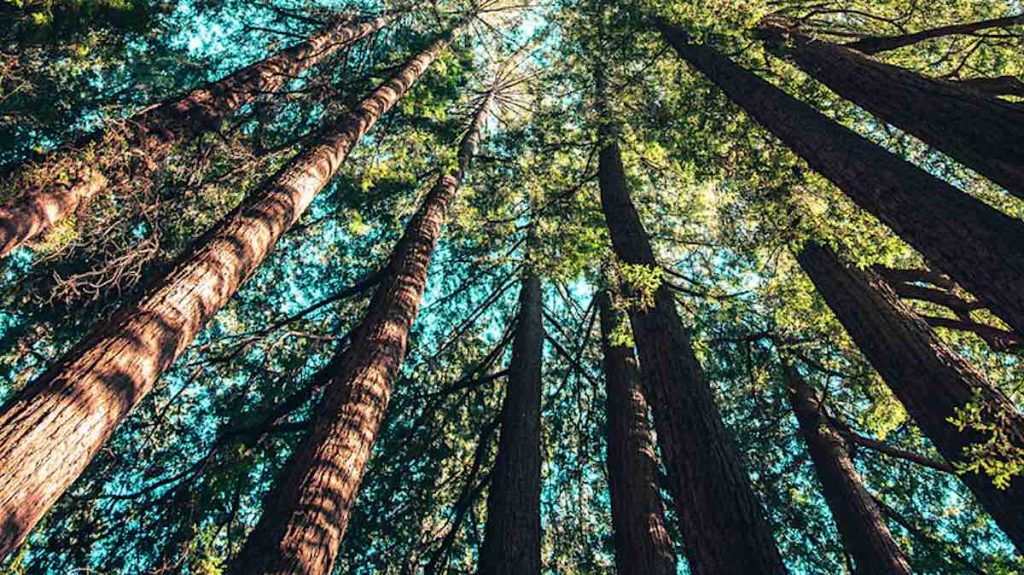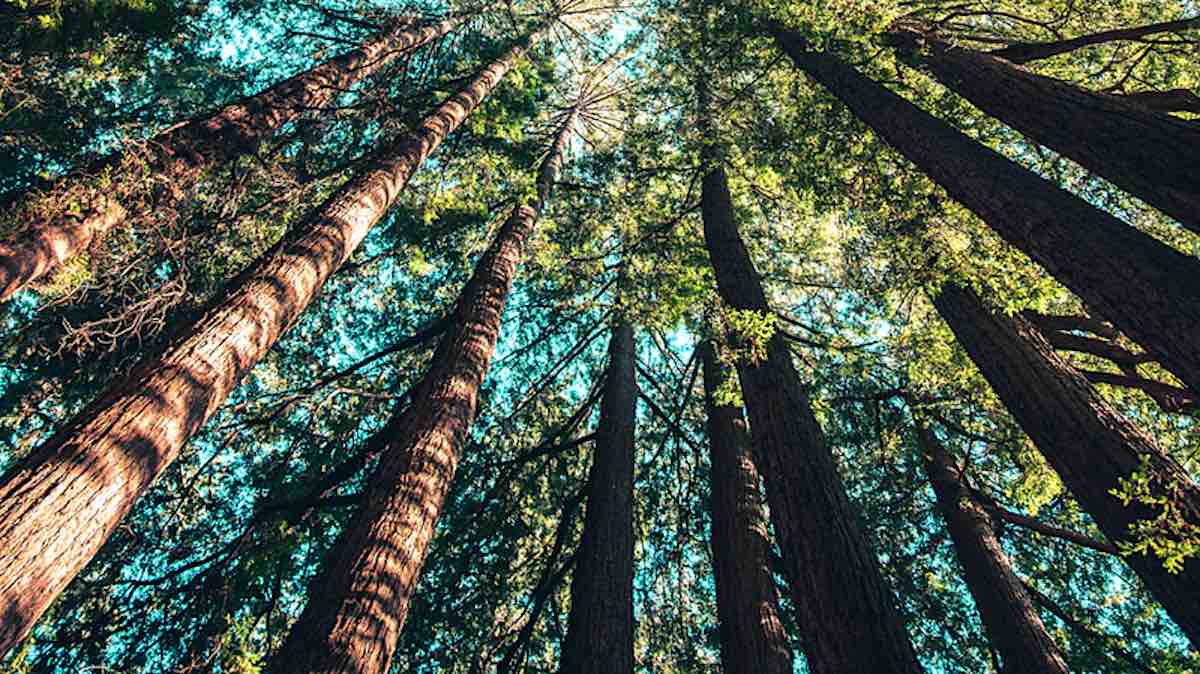After recent devastating fires in California, the Bureau of Land Management (BLM) is teaming up with a specialist non-profit forest management organization to re-engineer the typical Californian forest to be more fire resistant.

For decades in California, forest restoration consisted of planting pine trees like rows of cabbages. The theory behind it was that sunlight would be especially limited on the forest floor, preventing a flood of grass shrubs and weeds from taking over the ground in between the trees.
This “Pines in Lines” strategy also created the perfect forest as far as fires were concerned, as it allowed the fires enough fuel to reach the canopies, and places to spread in every direction.
American Forests, the non-profit in question, works hard to replant forests in a way that’s much more like how many forests existed before the arrival of Europeans—namely clumps of different kinds of trees, not just pines, spaced far enough apart to prevent wildfires from spreading.
This also protects from drought, as the small clumps, excluded from the company of other trees by open ground, have a greater monopoly on the supply of water that falls on them.
American Forests has climate-informed projects going in the San Bernardino Mountains, as well as around the towns of Paradise and Concow which the Camp Fire destroyed, in collaboration with the BLM, Butte County Fire Safe Council, and the Butte County Resource Conservation District which includes both public and private lands.
RELATED: Wildfires: Bad For People – But Good for the Environment
In San Bernardino, the organization is providing 75,000 trees in 2020 and 2021 to restore fire-damaged forests in the mountains surrounding Los Angeles, and 120,000 trees over the next two years in the burn scar of the 2018 Camp Fire.
Unnatural Selection
Along with providing habitat for California’s rich diversity of wildlife, forests also help to absorb and sequester CO2, and the loss of over four million acres of forests in the last three years, by way of fire no less, goes a long way towards damaging California’s ability to meet CO2 reduction targets, some of which it already made back in 2016.
Over the coming decade, California is aiming to reduce CO2 emissions to levels 40% below what they were in 1990, and the burning of so many forests may have actually set the state back behind what it achieved in 2016.
American Forests goes the extra distance to ensure their forests have the highest degree of survivability, thereby ensuring climate goals can be met and stay met.
One way is by seeking out the trees in forests which have survived disease, fire, or drought, and specifically harvesting their seeds in attempt to germinate new forests with whatever genetic resilience these lucky trees had.
MORE: 5-Year-old Sends Baby Yoda Mascot to Keep California Firefighters Company
In order to ensure these strategies don’t need to be endlessly repeated, the organization is using modeling to imagine the needs of the trees and the ecosystem they inhabit 30 or even 50 years in the future.
“It’s very common to look at what was there before the fire and just say, let’s replace that one for one—try and get the exact same seed, exact same trees, and replant them,” Austin Rempel, senior manager of forest restoration at American Forests told Fast Company. “But that doesn’t make sense when looking out 30, especially 60 years from now.”
While the COVID-19 shutdowns have limited BLM and Forest Service workers’ abilities to get into the fire-damaged areas in California and make plans for reforestation, American Forests are hard at work, planting trees and clearing underbrush—one of the key factors in rampant wildfire growth.
SHARE The Hope and Spread The Good News on Social Media…




















